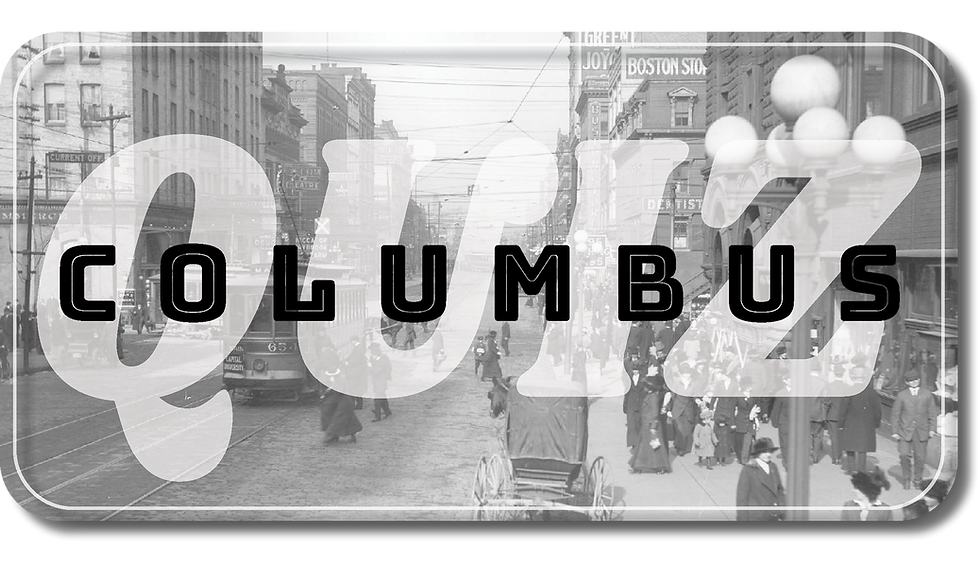In Columbus, the Green Book was an important guide for African American travelers
- ColumbusNDC
- Jul 30, 2020
- 3 min read
You’re probably familiar with the 1946 hit song “(Get Your Kicks on) Route 66” about the iconic highway that traverses the majority of the US, inspiring Americans to pack up their cars to explore the array of sights the country offers. While this song was covered by numerous black artists, such as Nat King Cole and Chuck Berry, during the segregated Jim Crow era it was scary—and often life-threatening—for black Americans to travel around the United States. Self-proclaimed “sundown towns” that prohibited African Americans from entering at dusk were widespread throughout the country; Illinois, where Route 66 started, had about 150 of them in the 1920s.
It was truly dangerous for African Americans to travel the US without a guide designating safe places for them to stop, and fortunately, that became a reality for a postal worker in New York.
Victor Hugo Green created an annual guide of hotels, restaurants, service stations, and other businesses that black travelers could safely patronize called the Green Book, also known as the Negro Motorist Green Book, in 1936. He continued publishing the Green Book for another thirty years until 1966, after segregation was finally outlawed. The publication was widely forgotten until the award-winning 2018 film “Green Book” came into the spotlight, a true story of renowned black pianist Dr. Don Shirley touring the Deep South with a white driver/bodyguard in 1962. The guide was a necessity for Dr. Shirley, who faced a great deal of racism during his tours, such as being threatened by residents of a Wisconsin “sundown town” in 1963 who left a sign at the town’s limits warning blacks to avoid the town after dark, but worded much less kindly: “N******, don’t let the sun go down on you in our town.”
The map below shows all Green Book locations in the 1956 edition, which are quite evenly spread among the North and the South, including Central Ohio. Click here to view the 1952 Green Book locations in Cincinnati, Cleveland, and Columbus.
While many assume that racism and discrimination was worse in Southern former slave states, it was always prevalent throughout the country, including in Columbus. Despite the prevalence of African Americans in Franklin County, who have lived in the region since its founding due to Ohio’s designation as a slave-free state, segregation was strongly enforced, and runaway slaves were not automatically free; those without freedom papers and legal protection remained hidden.
During the Great Migration in the 20th century, groups of African Americans arrived from southern states in Northern cities en masse, seeking economic opportunity in industry and manufacturing. Before that, emancipated slaves formed communities, including one small hamlet near Westerville in 1859 called Africa that was a stop on the Underground Railroad. These early settlements helped lead to a further increase in Franklin County’s African American population in the future.
Yet despite the role it played in rescuing slaves, Columbus enforced segregation and African Americans were largely limited to certain parts of the city.

The Deshler-Wallick Hotel circa 1941.
Green Book locations in Columbus were mainly located in the East and South sides of the city, as well as downtown. While many of the businesses listed catered specifically to African Americans, some were open to all, such as the Deshler-Wallick Hotel, pictured to the right. It was a luxury hotel in the heart of downtown that once boasted of hosting then-president Harry Truman, but was demolished in 1970.
Another Green Book-listed hotel that is still standing today and was actually featured in the film is the Hotel St. Clair at 338 St. Clair Ave near King-Lincoln-Bronzeville. The building has been preserved and repurposed into apartments, pictured below.

Hotel St. Clair after its renovation into apartments. Originally built as a hospital, it was used as a hotel from 1944-1976 and hosted famous black musicians (in addition to Dr. Don Shirley) such as Duke Ellington and Ella Fitzgerald.
While the Green Book served an important purpose and likely saved thousands of black Americans from embarrassment and danger in their travels, author Victor Hugo Green was hopeful the publication was only temporary. In the 1949 edition, he accurately predicted that “there will be a day sometime in the near future when this guide will not have to be published.” Although that day would not come for another seventeen years, it certainly was a proud moment for Green to cease the publication of the Green Book with the assertion that African Americans were finally free to utilize any business they pleased along their travels.
The Green Book is a small glimpse into the measures African Americans were forced to take to protect themselves and their communities during the era of segregation, and a sobering reminder of the struggles they faced against the majority white culture.



Comments